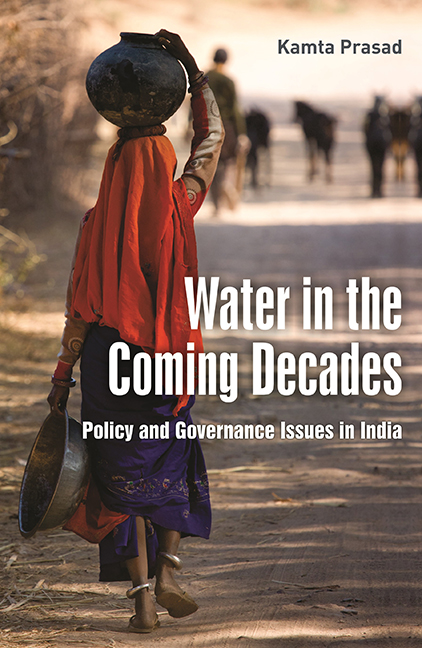Book contents
- Frontmatter
- Dedication
- Contents
- List of Tables
- List of Abbreviations
- Preface
- Acknowledgements
- Section I Overall Perspectives
- Section II Situational Analysis
- Section III Socio-economic, Institutional and Environmental Aspects
- Section IV Technological Options
- Section V Concluding Observations
- References
- Index
2 - Contemporary Water Scenario in India
Published online by Cambridge University Press: 13 July 2022
- Frontmatter
- Dedication
- Contents
- List of Tables
- List of Abbreviations
- Preface
- Acknowledgements
- Section I Overall Perspectives
- Section II Situational Analysis
- Section III Socio-economic, Institutional and Environmental Aspects
- Section IV Technological Options
- Section V Concluding Observations
- References
- Index
Summary
When we talk about the water scenario in India, the first two questions that arise are how comfortable we are with respect to the availability of water resources and what prospects there are for the future. Another question is whether our water resources are properly managed so that they remain available for us in requisite quantity and quality as well as for future generations. A few key issues are highlighted briefly in this chapter. Details are available in respective chapters.
Emerging regime of water stress and scarcity
The analysis of figures on the availability and requirement of water in India made in Chapter 4 gives a clear indication of the increasing scarcity of water to be faced by this country in future. It is true that the overall availability of 1,123 km³ of utilizable water as against the estimated requirement of 813 km³ during 2010 seems to indicate a comfortable picture as of now. However, the position would be less comfortable in future. By 2025, the requirement at 1,093 km³ would be more or less close to the utilizable water of 1,123 km³. By 2050, water requirement is estimated to increase to 1,447 km³, i.e. more than the availability of 1,123 km³. The position may turn out to be even more uncomfortable if the availability of surface water becomes less than 690 km³ due to reasons mentioned in Chapter 4. On the contrary, there is a vociferous demand to raise the requirement for sustaining the riverine ecosystem, thereby making it even scarcer.
Analysis in per capita terms reveals a similar picture. Because of rising population, the per capita availability of water has declined from 5,200 m3 in 1951 to 1,588 m3 in 2010, which has already come below the water-stressed condition indicated by per capita availability of less than 1,700 m3 of water. Per capita availability is higher than 1,700 m3 in only 4 basins (Ganga–Brahmaputra, Baitarni, Mahanadi and Narmada) out of the 15 major river basins in India (see Table 4.3, Chapter 4). An international comparison also indicates a comparatively weak position for India. Even China, which is more populous than India, has a much higher per capita availability of water (Data in Chapter 4).
- Type
- Chapter
- Information
- Publisher: Foundation BooksPrint publication year: 2014



